#traditional Indian ghee
Explore tagged Tumblr posts
Text
Wheat Halwa
## **Wheat Halwa – First Dessert from My New Kitchen** Welcome to my new kitchen! Although we haven’t fully shifted yet, I couldn’t resist the urge to make a small dessert to mark the beginning of this new journey. With limited ingredients, a handful of utensils, and using whatever I could find in packages, I decided to prepare a simple yet delicious **Wheat Halwa**. This dish, made by…
#almond garnish dessert#beginner-friendly dessert#cane sugar dessert#Comfort food#easy halwa recipe#festival dessert#first dessert in new kitchen#ghee halwa#homemade dessert#Indian sweet recipe#quick halwa recipe#roasted wheat flour halwa#simple sweet dish#traditional halwa recipe#wheat halwa recipe
0 notes
Text
Delicious Seviyan Kheer | Indian Pudding
Aromatic Indian dessert, Seviyan Kheer: celebration of culture and tradition.
There’s something magical about the aroma of spices and ghee wafting through the kitchen, hinting at the delicious dessert that’s about to grace your table. Yes, we’re talking about the classic Indian Seviyan Kheer, a delightful pudding made with thin vermicelli or seviyan. This dish is a staple in many Indian households, especially during festive occasions. It’s a simple yet satisfying dessert…

View On WordPress
#After-Dinner Treat#Cardamom#Coconut Milk#Cold Dessert#Dry Fruits#Festive Dessert#Fresh Cream#Ghee#Hot Dessert#Indian cuisine#Indian Dessert#Lunch Accompaniment#Milk#Puri Meal#Saffron#Seviyan Kheer#sugar#Sweet Dish#thepanvelite#Traditional Recipe#Vegan Option#Vermicelli Pudding#Whole Wheat Vermicelli
0 notes
Text
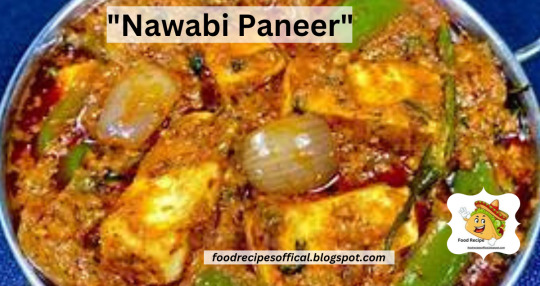
"Nawabi Paneer". Paneer, the main ingredient in Nawabi Paneer, is a rich source of protein, which is essential for muscle building, repair, and overall growth. Read full recipe
https://foodrecipesoffical.com/wp-admin/post.php?post=4240&action=edit
foodrecipesoffical.blogspot.com
#Paneer#Indian cuisine#Nawabi cuisine#Creamy#Spices#Aromatic#Vegetarian#Rich#Flavorful#Traditional#Royal#Ghee#Cashew#Yogurt#Nutritious#Protein#Calcium#Culinary heritage#Indian spices#Main dish
0 notes
Text
The thing that I love about Jewish food is that across our wonderful and diverse communities, we often eat pretty much the same dishes, with slight variations in name, flavor and technique. For example, the typical Iraqi Hanukkah sweet zalabia — a delicious fried, yeasted funnel cake soaked in a sticky and intensely sweet syrup — is essentially the same as Syrian zalabiah (although theirs is a different shape) and Indian jalebi, both also eaten on Hanukkah.
This makes perfect sense, as Jews who originated from Spain spread across the world after the Inquisition, taking their recipes with them across the Middle East. There are documented recipes for zalabia in a 10th-century Arabic cookbook, which was originally made by pouring the batter through a coconut shell. The recipes were slightly adapted according to their new surroundings, including zalabia. Indian Jews, for instance, use ghee and turmeric, two very common ingredients in Indian cooking; Syrian Jews use orange blossom water as the main flavor of their syrup for similar reasons.
Our family makes Iraqi zalabia, and very little has changed through the ages. I love the nostalgia that Hanukkah holds for so many of us; the memories of watching parents and grandparents frying treats — be they zalabia, sfenj, latkes or any of the other delicacies Jews enjoy at this time of year — waiting for the chance to taste them.
This year, my 5-year-old son stands next to me as I fry the zalabia — he is responsible for dunking them into the syrup, licking his sugary fingers as he goes, I’m sure, and admiring his handy work at the end.
In these troubled times, it brings me reassurance to think of the culinary traditions that have stood the test of time, through wars and atrocities. I am comforted that, like the Hanukkah story itself, we will come out the other side victorious — perhaps with a new festival or culinary traditions to celebrate the time in 2023 when Hamas attempted, and failed, to slay the Jewish people.
Note
You will need: a kitchen funnel and a squeezy bottle with a nozzle top.
6 notes
·
View notes
Text
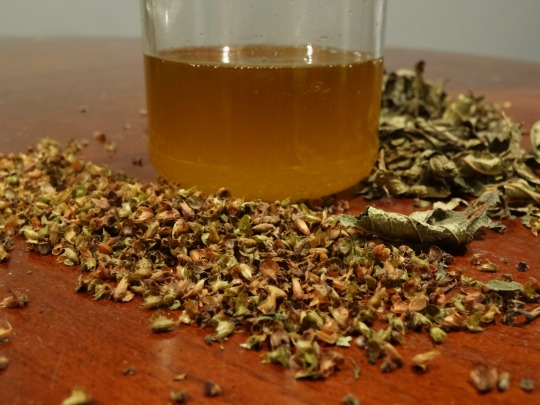
[ID: A jar half-full of a dark gold liquid. Dried herbs are scattered on the table around it. End ID.]
Niter kibbeh / ንጥር ቅቤ (Ethiopian clarified butter)
Niter kibbeh is a butter clarified with herbs and spices. It is commonly used in Ethiopia and Eritrea to add a fresh, robust, well-rounded flavor to meat dishes. Some less traditional recipes include it in Ethiopian lentil stews or use it as a cooking oil; you might also use it in place of ghee or a tadka to lend additional flavor to Indian dishes, or stir it into any soup, stew, or chili to add aroma.
This recipe is for a typical Ethiopian preparation that does not skip steps or rely on undisclosed substitutions of herbs and spices; however, substitutions are suggested for those without access to Ethiopian herbs.
Recipe under the cut!
Patreon | Tip jar
Makes about 1/2 cup.
Ingredients:
For the butter:
2 cups (460g) unsalted butter, ghee (Indian clarified butter), or smen (Moroccan clarified butter)
For a vegan version, use vegan ghee, vegan cultured butter, non-dairy margarine, or refined coconut oil.
Clarified butter and coconut oil contain less water than butter or margarine, so you may have a slightly higher yield with these bases (or reduce your starting amount to 1 3/4 cup). I tested this recipe with 2 cups of Earth Balance stick margarine.
For the manteria:
1 garlic clove
2 cm chunk ginger
1 cm chunk fresh turmeric root, or pinch of ground turmeric (optional)
A few slices shallot or red onion
2 Tbsp (1.5g) dried koseret (ኮሰረት)
2 Tbsp (2.3g) dried Ethiopian holy basil (besobela / በሶቢላ), or one sprig fresh besobela
1 Tbsp Ethiopian false cardamom (korerima / ኮረሪማ)
2 tsp fenugreek seeds (abish or hulbet / አብሽ)
2 tsp nigella seeds (tikur azmud / ጥቁር አዝሙድ)
2 tsp carom seeds (netch azmud / ነጭ አዝሙድ)
Pinch of salt
The "kibbeh manteria" / ቂቤ ማንጠሪያ (or "ye kibe kimem") is the blend of herbs and spices added to the butter while it’s clarifying—the verb "manter" means "to clarify." Each cook has their own preferred manteria recipe, but they are commonly made of some combination of shallot, ginger, garlic, korerima, nigella seeds, carom seeds, fenugreek, besobela, koseret, rosemary, and turmeric.
See notes on spices and herbs at the end.
Instructions:
Niter kibbeh is usually made using clarified fermented butter. If you're starting from a base of ghee or smen (clarified fermented butters which may be readily purchased at halaal grocery stories in the U.S.A. and Europe) or vegan fermented butter, all you need to do is heat the butter with the manteria and then strain. If you're starting from a base of fresh butter, you might choose to ferment it yourself for about a month, or skip this step. I have not tested the fermentation step with non-dairy margarine.
1. Dark-roast the fenugreek. Heat a dry skillet over medium. Roast fenugreek, agitating occasionally, until it has considerably darkened to a medium brown. Set aside and allow to cool. Gring using a mortar and pestle or spice mill.
2. Ferment the butter. If using fresh butter, allow it to soften at room temperature and mix it with a teaspoon of fenugreek and about a tablespoon of koseret until well-combined. Allow to mature in a sealed container at room temperature for 30-40 days, until it is very soft and smooth and smells pungent and well-fermented. This will take longer in a cold climate than a hot one.
Make sure that your storage container and anything else that will touch the butter are clean and dry, and that the container is airtight. If the butter develops mold, discard it.
3. Prepare the wet mixture. Peel and crush garlic, ginger, shallot or onion, and fresh turmeric into a paste using a mortar and pestle. If your besobela is fresh rather than dried, crush it along with the aromatics at this point.
4. Prepare the dry mixture. Coarsely crush dried herbs and spices in a mortar and pestle or spice mill.
5. Make the niter kibbeh. Heat butter, margarine, or coconut oil on medium until melted. Add dry spices and herbs and cook, stirring often, until simmering. You will know when dairy butter is ready for you to proceed to the next step because its foam will dissipate.
6. Add wet herbs and aromatics and lower heat to low. Cook, stirring often, for about 10 minutes or until fragrant. Take off the heat and allow to cool.
7. Strain through a cheesecloth and store in an airtight container, refrigerated, for up to several months. The niter kibbeh will solidify in the fridge.
Notes on spices and herbs:
Besobela
Ethiopian holy basil is a subspecies of basil whose flowers have a distinctive fruity or tea-like aroma. Dried besobela may be purchased online.
Some recipes call for basil or oregano in place of besobela, but to my nose the aroma of besobela is more akin to that of camomile; you might use a mixture of basil and camomile.
Korerima
Korerima, also known as “grains of paradise,” “black cardamom,” or “false cardamom,” is the seed of a plant in the ginger family. Some recipes mistakenly call for Nepal cardamom in place of korerima, because Nepal cardamom is also known as “black cardamom” in English. The aroma of korerima once ground, though, is much more akin to that of green cardamom than to the smoky, camphorous aroma of Nepal cardamom; I would suggest green cardamom as a substitution.
Some niter kibbeh recipes use both the seed and seed pods of 'unhulled' korerima.
Netch azmud
Carom seeds may be found in any halaal grocery store, where they will be labelled "ajwain." You may also see these referred to as “white cumin” or “caraway seeds” in English, but don’t confuse them with true caraway seeds (Carum carvi), which are larger.
Tikur azmud
Because “tikur azmud” literally translates to “black cumin” in English, some recipes make the mistake of calling for kala jeera (Indian black cumin)—however, the seeds are from different plants entirely. “Tikur azmud” refers to the seeds of the Nigella sativa plant, which are known as nigella seeds in English cooking and kalonji in Indian cooking.
Koseret
Koseret, Lippia abyssinica, is a species of plant in the verbena family with a mint-like, camphorous aroma. Dried koseret may be found at a specialty spice store, or online.
Koseret has antibacterial properties which aid in preserving butter; I have not tested fermenting butter without it. You might try a mixture of dried mint and basil as a substitution, but check on the butter frequently if you are fermenting it.
60 notes
·
View notes
Note
oooh is it Holi tomorrow? :DD can you give us some ideas or headcanons about James celebrating Holi with his parents/Sirius/Harry? <33
Honestly, depending on a few factors, everyone celebrates Holi on a different day (the traditions for Holi are different depending on the sect of Hinduism and region of celebration as well). Also, North Indian होली and Maharashtrian होळी (search up the differences in pronunciation, it's a bit hard to describe) are two completely different religious holidays. The Hindi होली (ho-lee) is equivalent to the Marathi "ranga panchami" (ranga- colour, panchami- fifth day of a lunar cycle). As far as I know, the Marathi होळी doesn't have an equivalent.
The traditions I'm going by are my family traditions— the Marathi traditions of my region— so i hope you enjoy. Let's goooo!
Oh yeah, this is before Harry turns eleven and goes to Hogwarts.
The day of होळी signifies the first day of spring in Maharashtra. Every year, the members of the Black-Potter family start the day by watching the sunrise together with cups of spicy chaha (marathi for chai).
The day is pretty much the usual, except for food. James cooks up a storm in the kitchen, making all the pancha pakwaan (pancha- five, pakwaan- dishes) with puran poli (a sweet flatbread), three different vegetables, rice, amti (somewhat like daal, either drunk from the bowl or poured over rice), and a traditional dessert. They invite the Weasleys, the Marauders and the Longbottoms over, and have a veritable feast for lunch and dinner. A very chaotic affair, but the Black-Potters love it.
All three of them absolutely adore panchamrut (pancha- five, amrut- nectar of the Gods. It's made of five ingredients- milk, ghee, sugar, curd, honey). Once James is done with his pooja and the naividya (the first morsel/sip of any food/drink is always offered to the Gods), the three of them pounce on the drink with all the vigour of someone who hasn't had anything to eat for days.
As the evening draws closer, Harry, the Weasley kids, Neville, and Lily and Remus out to the woods that surround the house and collect dried wood for. Meanwhile, James, Sirius and Peter gather the panchamrut and a bite each of the pancha pakwaan, and ready the porch for lighting a safe fire with the help of the Molly, Arthur, Augusta, Alice and Frank.
Just as the sun sets, the bonfire is lit, and the blaze reaches high into the sky within minutes, helped along by magic. Everyone sits around it in a circle, closing their eyes and praying— the fire signifies the destruction of the bad energy of the previous year and the purification of the soul for a better new year. Holi is the first day of spring, a mark of new beginnings, a symbol of clean slates and fresh starts. The Holi fire is where you throw all your baggage of the last year so it burns till it is gone, to prepare yourself for the upcoming year.
The pancha pakwaan and panchamrut are poured into the fire to loud cheers from the children, and then the real festivities begin. Everyone walks around the fire in a circle, howling at the top of their lungs. The sounds are slightly terrifying, especially when the darkness really sets in and the only light is the massive bonfire, but Harry loves the ferality of the entire thing. It's primal, the way the war cries rise up with the fire, echoing throughout the massive grounds of Potter Manor like the echoes of screaming ghosts.
Sometimes, Harry, Ginny and the Weasley twins start war dances instead of the howling. Those times, Bill and Charlie eagerly join in along with James, Lily and Alice, and the hard and fast thumping of their feet on the packed mud porch makes it seem like an earthquake is cracking the ground open.
Other times, they write their mistakes, insecurities, bad thoughts and regrets of the past year onto slips of paper and throw them into the fire, to signify the new start. Last year does not matter anymore; it is done and you cannot change it. You can have a new beginning, though, and Harry vows every year that he will be a better person.
James loves these times, where everyone he cares about is close to him and glowing with happiness. Holi is his favourite festival, because it is the day he and Sirius kissed for the first time. It is the day he remembers with fondness— childhood years spent with his parents and grandparents and cousins in a crowded wada (kind of like a palace but the size varies from anywhere between four bedrooms to like 70), sneaking panchamrut from under his mother's nose, dancing Garba around the fire with his Gujju friends in India, the day the Potter family first moved to Britain right before his 11th birthday. People expect his favourite festival to be Diwali or Ganpati Chaturthi because they are loud and huge and phenomenal celebrations, but his favourite is this— all his favourite people in the same place with the same happy smile and the same traditions that he loved when he had blood family.
Holi is a festival for families and loved ones, and the Black-Potters have a lot of love to go around. Family isn't defined by blood, after all.
#sirius black#harry potter#james potter#prongsfoot#bambibelle#marauders headcanon#this took such a long fucking time bro#i had no idea what to write and what not to write#and english is such an inadequate language#so many Marathi words that are untranslatable uGH#holi#marathi holi#होळी#desi harry potter#desi james potter#indian harry potter#indian james potter#indian festival#im sorry it took such a long time to answer but yeah#hope you like it!!!
52 notes
·
View notes
Text

Sweet Delight: Coconut Laddu with Natural Sugar
Introduction:
At the brink of festive season cravings for traditional sweets is a big dilemma for Fitness-focused people. We usually find diet conscious people torn between indulging in sweet treats and sticking to diet plans. Well, no worries! Here we are providing you with a healthy, nutritious as well as natural sugar dessert that will satisfy your taste buds with the richness of coconut- Coconut Laddu with Natural Sugar
The Magic of Coconut Laddu:
Coconut Laddu , a traditional Indian dessert, that is part of many holy offerings. It is prepared using three main ingredients that is coconut, ghee(clarified butter), and sugar(natural sugar in this case). This sweet dish is not only healthy but surprisingly indulgent:
Coconut: Rich in fiber, protein, and healthy fats
Natural Sugar: A healthier alternative to refined sugar
Ghee: Provides essential fatty acids and vitamins
Ingredients:
2 cups shredded coconut
1 cup natural sugar (choose one):
Jaggery (gur) powder
Honey
Coconut sugar
Date sugar
Maple syrup (adjust quantity)
Read Full Blog: Coconut Laddu with Natural Sugar
.
2 notes
·
View notes
Text

Paratha (pronounced [pəˈɾɑːtʰɑː], also parantha) is a flatbread native to the Indian subcontinent, with earliest reference mentioned in early medieval Sanskrit, India; prevalent throughout the modern-day nations of India, Pakistan, Nepal, Bangladesh, Maldives, Afghanistan, Myanmar, Malaysia, Singapore, Thailand, Mauritius, Fiji, Guyana, Suriname, and Trinidad and Tobago where wheat is the traditional staple. It is one of the most popular flatbreads in the Indian subcontinent and the Middle East. Paratha is an amalgamation of the words parat and atta, which literally means layers of cooked dough.
The paratha is an important part of a traditional breakfast from the Indian subcontinent. Traditionally, it is made using ghee but oil is also used. Some people may even bake it in the oven for health reasons. Usually, the paratha is eaten with dollops of white butter on top of it. Side dishes which go very well with paratha are curd, fried egg, omelette, mutton kheema (ground mutton cooked with vegetables and spices), nihari (a lamb dish), jeera aloo (potatoes lightly fried with cumin seeds), daal, and raita as part of a breakfast meal. It may be stuffed with potatoes, paneer, onions, qeema or chili peppers.
4 notes
·
View notes
Text
Pure Organic Cow Ghee: Benefits, Uses, and Where to Buy
Pure organic cow ghee is a prized ingredient in Indian cooking and Ayurvedic practices, and it is known for its rich flavor, versatility, and numerous health benefits. Made by traditional methods from high-quality, organic cow’s milk, this ghee is free from additives and chemicals, retaining essential nutrients like vitamins A, D, E, and K, along with healthy fats. Organic cow ghee is an excellent choice for cooking due to its high smoke point and nutty aroma, making it perfect for sautéing, frying, or adding a finishing touch to curries and dals. Beyond cooking, it has long been used in Ayurveda for its anti-inflammatory and digestive properties, and it is often recommended for boosting immunity and skin health. Organic cow ghee can be found in health food stores and online platforms specializing in traditional and organic products. Choosing pure, certified organic ghee ensures you’re receiving the maximum nutritional and taste benefits while supporting sustainable, ethical farming practices.
More info;
#organic cow ghee#benefits of cow ghee#buy organic ghee online#pure cow ghee#A2 cow ghee#grass-fed cow ghee#traditional cow ghee#Indian ghee online#ghee for cooking#health benefits of organic ghee
0 notes
Text
Wheat Halwa with Jaggery
Warmth in a Bowl: Wheat Halwa with Jaggery – A Perfect Winter Treat and Temple Offering As the chilly winds of winter embrace us, there’s nothing quite like a comforting bowl of wheat halwa with jaggery to warm both the body and the soul. This traditional Indian dessert not only serves as a delightful sweet treat but also carries cultural significance as it is often offered in temples during…

View On WordPress
#Cardamom#Comfort food#community celebration#cultural significance#Desserts#Easy recipes#energy boost#festive recipe#ghee#gratitude#ingredients#Jaggery#method#natural sweetness#nutmeg#Nutrient-rich#Recipe#temple offering#traditional cooking#traditional Indian dessert#warming spices#warmth#wheat halwa#Whole Wheat Flour#Wholesome#winter treat
1 note
·
View note
Note
Mini As a health and safety inspector ask. Decide to ask the question on tumvlr
@thesouldevourer800 Ok, I've been putting this off for way too long:
*Mini pulls up to Raksha Bitez*
Brynne: Mini? What are you doing here?
Mini, holding out her badge: Health inspection. I'm here to make sure you're up to code.
Brynne: Fine. Look around as much as you want. I keep my business spic and span. And anything that gets by me runs straight into Hira.
Mini: Uh-huh. Well, the overall look may be standard...
Brynne: Told ya-
Mini: But those jalebis on your menu are gonna cost you.
Brynne: I know the girl who thinks cookies made of grass-
Mini: Organic kale
Brynne: -GRASS tastes good is not lecturing me on my menu. Literally everything here is made of healthy ingredients used in traditional Indian recipes.
Mini: I'll be the judge of how healthy it is. Are they fried in vegetable oil or olive oil?
Brynne: Neither. Pure Ghee. Good for your heart and lighting candles.
Mini: Is the flour used in the dough gluten-free?
Brynne: All of them. We've got almond, chickpea, you name it. Using just wheat flour is for amateurs.
Mini: What about your glaze?
Brynne: Cane sugar and honey.
Mini: Alright. Well, in that case, it looks like everything's in order. Mind if I try a jalebi before I go?
Brynne: Be my guest!
*Mini tries one and looks satisfied for a second.*
*Then she chokes on a small piece*
Brynne: Oh, frick. You're not gonna close my place down now, are you?
Mini, pulling herself together: No, I'm not a tyrant. I'm very reasonable. Besides, I didn't chew my allotted 50 times, so the fault is my own.
Brynne: Oh thank-
Mini: But I'm still gonna need you to get rid of that ugly demon in the corner. It's an emotional distress hazard.
*Looks behind them to see a freaky but happy dancing mascot*
Brynne: THAT'S MY WIFE YOU B****
Hira, growling: Hi, Mini!
11 notes
·
View notes
Text
Besan Ladoo is a traditional Indian sweet that holds a special place in the hearts of many. Known for its rich flavor and melt-in-the-mouth texture, this dessert is often prepared during festivals, celebrations, and special occasions. Made primarily from roasted gram flour (besan), ghee (clarified butter), and sugar, Besan Ladoo is a delightful treat that is both simple to make and incredibly satisfying.
2 notes
·
View notes
Text
Most Popular And Best Dishes In India By Akshay Mehndiratta That You Must Try

India is a country where you can taste a wide variety of famous dishes and you will find many food lovers relishing the delicious flavors. In India, many food bloggers from abroad come to enjoy the famous and delicious food of the country. One such blogger is Akshay Mehndiratta, who loves not only cooking but also eating. He travels to the most famous states of India and samples their famous dishes. Through his blog, he shares recommendations for dishes he savors during his journeys, tempting your taste buds. These famous dishes are a must-try!.
1. Biriyani
Biryani, a favorite dish in India, holds a special place in the culinary world with its rich taste and aromatic spices. Food lover Akshay Mehndiratta enjoys a variety of dishes ranging from juicy chicken biryani to delicious egg biryani, delicious mutton biryani to juicy prawn biryani and even the vegetarian flavor of mushroom biryani. Each variation of biryani gives a completely unique blend of spices and ingredients, reflecting the cultural richness and culinary history of India. From aromatic Hyderabadi Dum Biryani to spicy Kolkata Biryani and aromatic Lucknowi Biryani, the surrounding specialties enrich the biryani landscape, tantalizing the senses and leaving diners yearning for more. Since Akshay loves the diverse flavors of biryani, he recommends this biryani to everyone.
2. Vada Pav
Vada pav is a vegetarian dish that brings water to the mouth. It is a famous dish in India and people are relishing this dish. Akshay says that a classic street food dish from the busy streets of Mumbai is made from spicy potato, coated in gram flour, and served with chutney and pav. This highly satisfying snack embodies the creativity of Indian street food culture, which Ashok Vaidya started selling outside the Dadar railway station in 1966. It has now reached the hearts and minds of the people and is loved by them.
3. Masala Dosa
Masala Dosa, an essential South Indian dish, is a favorite culinary treasure known for its crispy texture and delicious potato or vegetable filling. Foodie Akshay Mehndiratta also enjoyed this traditional dish, which consists of thin, golden-brown crepes in a lentil batter filled with a combination of fermented rice and spicy potatoes. Dosa is expertly folded and served with coconut chutney, spicy sambar and sometimes extremely spicy red chutney, making it a delicious dish. Be it breakfast or lunch, masala dosa never fails to create a sense of satisfaction, making it a favorite among foodies everywhere.
4. Chloe and Kulcha
Chole and Kulcha, a famous street food originating from the bustling streets of Delhi, captures the essence of North Indian flavors in a delicious and hearty snack. Chole is a spicy and tangy chickpea curry packed with aromatic spices like cumin, coriander and garam masala. This chole is served hot with kulcha. Kulcha is soft and fluffy leavened bread, often topped with ghee to make it delicious. Chole and kulcha together create a harmony of texture and taste that delights the taste buds. Akshay appreciates the culinary artistry behind this beloved street food that has made its way into the hearts and stomachs of foodies across India.
5. Kachori
Kachori, a favorite Indian snack loved for its crunchy exterior and delicious taste, is a recipe that thrills foodies across the country. Akshay Mehndiratta, deeply appreciate of traditional flavours, savors this iconic dish. Hailing from the streets of Rajasthan, Kachori is a fried flour pastry filled with a spicy mixture of lentils, peas or potatoes, flavored with aromatic spices like cumin, coriander and chilli powder. Served hot and crispy, kachori is often paired with spicy tamarind or mint chutney, which elevates its taste to new heights. Kachori, whether served as a snack or a full meal, never fails to evoke feelings of warmth and pride, making it a popular dish in Indian cuisine.
6. Bhelpuri
Akshay Mehndiratta loves Bhelpuri, a popular street food originating from the colorful streets of Mumbai. It is a beautiful combination of crunchy texture and spicy flavour. With a combination of ingredients — crunchy puffed rice, crunchy sev (thin sev made from chickpea flour), chopped onions, tomatoes and baked potatoes — served with spicy tamarind, or green chutney. this famous snack captures the spirit of Indian street food culture. You can enjoy this dish for a quick breakfast with family and friends, Bhelpuri embodies the spirit of culinary innovation and enjoyment that defines the bustling streets of Mumbai.
7. Misal Pav
Misal Pav is a Maharashtrian dish which is Akshay’s favorite dish. Originating in the colorful streets of Maharashtra, Misal Pav is a highly spicy curry prepared from sprouted moth beans, cooked in a rich and aromatic gravy with a blend of spices like cumin, coriander and turmeric. Served hot, the aromatic curry is garnished with crunchy farsan (fried salty snacks), finely chopped onions, clean coriander and lime juice, which adds a of texture and flavour. With a soft and buttery pav (bread roll), Misal Pav offers a satisfying delightful flavors in every bite.
8. Pav Bhaji
Pav Bhaji, a favorite street food from the bustling streets of Mumbai, It is Akshay’s favorite dish. This iconic dish includes a delicious and aromatic vegetable curry, called bhaji, which is prepared from a combination of mashed potatoes, tomatoes, onions, peas and capsicum, along with spices like cumin, coriander and garam masala. Bhaji cooked in an aromatic mixture of spices is served with smooth and buttery pav (bread roll), which is toasted with a generous amount of butter on a tawa. The dish is garnished with lemon, chopped onions and clean coriander, and it gives an unlimited taste pleasure in each bite.
Conclusion
Amidst the vibrant tapestry of Indian cuisine, Akshay Mehndiratta’s curated some list of dishes that everyone must taste it. From the aromatic allure of Biryani to the crunchy taste of Vada Pav, each dish has a unique taste that captures the essence of India’s diverse cuisine. Akshay’s passion for food and his deep appreciation for traditional flavors is reflected in every recommendation, inviting foodies on a culinary adventure from the congested streets of Delhi to the colorful lanes of Maharashtra.
If you are interested in learning more about delicacies, consider joining Akshay Mehndiratta’s journey. This journey will take you on a culinary adventure through the rich and diverse world of Indian cuisine, where you will experience the amazing flavors and health benefits of traditional Indian cuisine.
2 notes
·
View notes
Text
The Bukharian Jewish community, while little known by the world’s broader Jewish population, is certainly no stranger to the kitchen. With historical exposure to multifarious global influences, from Central Asia to Eastern Europe to everything picked up along the Silk Road, Bukharian cuisine reflects profound cultural fusion while maintaining its own unique flair. Here are eight essential Bukharian dishes that are worth a try:
Bakhsh
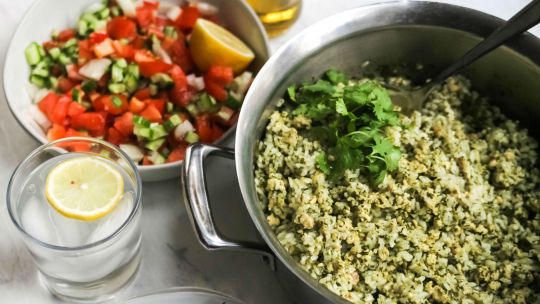
A staple in any Bukharian Jewish household, bakhsh is a rice dish easily recognizable for its distinctive green hue, which results from the addition of green herbs like cilantro and dill. Finely chopped meat or chicken, onions and other aromatics also feature prominently. Bakhsh is cooked using two primary methods — either by gradually layering the ingredients in a pot or submerging a bag with all the ingredients in boiling water. The latter preparation method, which allows the dish to be pre-cooked, was traditionally favored by Shabbat observers.
Osh Sovo
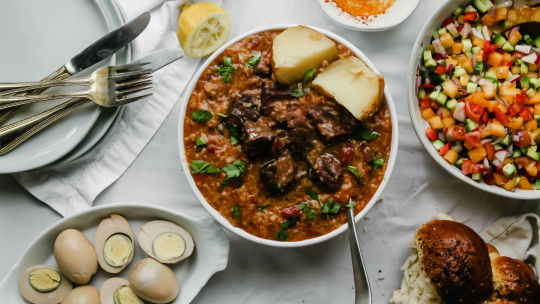
Another meal created to accommodate Shabbat, osh sovo is a slow-cooked fruity, meaty rice dish that is commonly served for Saturday lunch after being cooked overnight, beginning before the onset of Shabbat. The fruits incorporated into the rice are typically tangy and dry, often including prunes or dried apricots. Vegetables (such as tomatoes, carrots and potatoes) and spices (paprika or turmeric) are also thrown into the mix. The result is an incredibly silky, sweet-and-sour dish that’s a cross between a stew and a risotto.
Kov Roghan
This dish is simplicity at its finest — soft potato wedges are simmered with cubes of either chicken or meat in a broth to make for a heart- and soul-nourishing meal. Some soak up the remaining broth on the plate with lepyoshka, a round Uzbek bread adopted by Bukharians.
Osh Palov
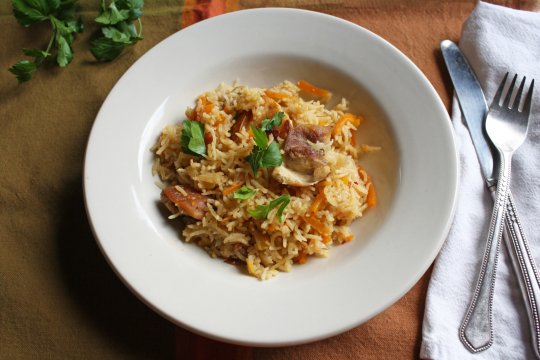
As Uzbekistan’s national dish, osh palov (also commonly called plov) has been adopted into a beloved food enjoyed at all sorts of Bukharian gatherings. To prepare it, chopped lamb is browned at the bottom of a large pot, after which thinly sliced carrots and onions are added, all topped with sticky and often oily white rice. Raisins, chickpeas and whole heads of garlic also typically adorn a large platter of plov, which often serves as the final course at large Bukharian dinners.
Osh Piyozi
Adopted from Afghan culture along the Silk Road, osh piyozi consists of softened, bite-sized stuffed onions. Fillings typically consist of a mixture of ground meat and rice, and the onions are often served in a sauce featuring tomatoes, dried fruits and peas, giving tasters a melt-in-your-mouth, umami bite.
Samsa

A cousin of Indian samosas, this baked savory pastry consists of triangle-shaped laminated dough filled with anything from ground meat and onions to pumpkin. While Uzbek households use butter or ghee as a laminate, Bukharians typically use non-dairy fats or opt for a non-laminated dough in order to maintain kashrut. One can often find a spicy tomato sauce beside a serving of samsa, which is meant to be drizzled into an opening in the pastry shell.
Sirkoniz

This rice dish can be perceived as a variation on osh palov, setting itself apart in two main ways: its distinct garlicky flavor and the fact that it is almost always served cold, another ancient Bukharian strategy for eating enjoyably while observing Shabbat.
Manti
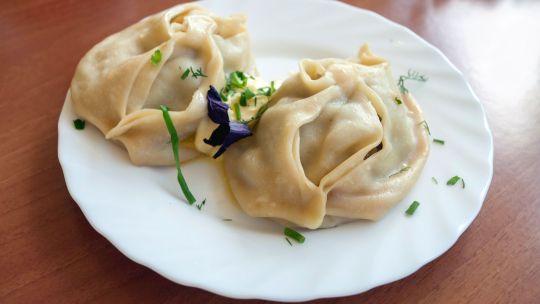
Adopted from Uzbek cuisine, manti are traditional steamed dumplings stuffed with ground beef and diced onions, often served with the same spicy tomato sauce used for samsa. Unlike some variations across the Caucasus, Bukharian manti are distinctly large, usually requiring a few bites to finish.
20 notes
·
View notes
Text
Badusha / Balushahi
Badusha / Balushahi is a traditional Indian sweet dessert recipe prepared mainly with Maida or all purpose flour, deep fried in ghee or oil and soaked in sugar syrup. It has a strong resemblance to glazed doughnut but varies with its layered texture and crunchy taste. The doughnut is light & fluffy whereas the Badusha / Balushahi has a soft & flaky texture. Badusha is made during different…
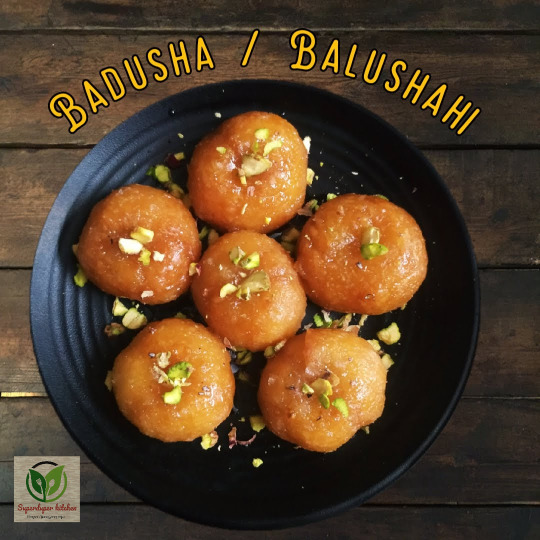
View On WordPress
#badusha#Balushahi#Diwali recipes#Indian Doughnut#Indian sweets#Sweets#Traditional sweets#Wedding sweets
2 notes
·
View notes
Text
Explore The Best Breakfast Choices For Weight Loss

The first meal of the day is breakfast. Breakfast is good for your mental and physical well-being. Healthy food gives the body what it needs to start the day by replenishing blood sugar or glucose.
Breakfast is crucial for individuals of all ages, particularly kids and teenagers. Breakfast eaters are more likely to be more focused, capable of solving problems, and have better hand-eye coordination.
They might also be more creative and aware. A hearty and nutritious breakfast generally helps prevent many lifestyle disorders, including diabetes, PCOD, and hypertension.
In English, "breakfast" means ending the fast from the previous night. There are a variety of "typical" or "traditional" breakfast alternatives, with cuisine selections varying globally based on geography and custom.
5 Simple Vegan Breakfast Ideas
There are plenty of vegan breakfast options available. Your morning meal with a delicious vegan spread gives your body the nutrition it needs. Nonetheless, milk, bread and butter, an omelette, and scrambled eggs make up the majority of Indians' breakfasts. Here are some vegan options for Indian breakfast that you can try from ToneOp:
1. Roti/Paratha With Vegan Curd Or Sabzi
A great and easy vegan breakfast option is paratha/roti with sabzi, a North Indian breakfast classic. To make a complete meal, add some vegan curd to the mixture. Steer clear of butter and ghee when cooking. To make your paratha even more delicious and nutrient-dense, stuff it with veggies like potatoes, cauliflower, radish, and coriander.
2. Dosa/Idli With Chutney And Sambar
Sambar and idli/dosa make a pretty simple breakfast. Sambar is a hot curry with vegetables, including onion, carrots, and tomatoes. Since split black gram and rice are used to make idli/dosa, they are high in fibre. Together, they make a delicious vegan breakfast.
3. Upma
Upma, also known as rava upma, is a traditional breakfast dish that is a savoury porridge prepared with a mixture of vegetables and semolina. This makes a tasty and nutritious dinner, especially with filter coffee or vegan chai.
4. Besan Chilla
In North India, besan chillas are a well-known dish that is both vegan and gluten-free. They are made by creating crepes using a spicy chickpea flour batter, which is easy to prepare.
5. Dalia
Dalia, also called broken wheat porridge, is a well-liked and nourishing vegan breakfast option. It is tasty and an excellent source of fibre, protein, and essential nutrients such as iron and magnesium.
7 Recipes For Egg Breakfasts
Here are a few recipes for egg breakfasts:
1. Mughlai Paratha
The quintessential Indian staple, parthas go well with almost anything. One such variation with a sizable fan base is Mughlai Paratha. From West Bengal, India, to Bangladesh, people love the traditional Bengali street food known as mughlai paratha, fried to perfection and loaded with eggs.
2. Baked Eggs
Onions, cherry tomatoes, and other seasonings are added to whisked eggs before they are cooked to perfection. It produces one of the greatest breakfasts, full of protein.
3. Parsi Eggs
Scrambled eggs with subtle spices, a traditional Parsi dish, are eaten with bread, buns, or pav.
4. Indian Style Omelet
Stir-fried spicy eggs with tomatoes, onions, and fragrant spices. A quick, easy, and savoury typical Indian morning food is the masala omelette. It's a fantastic high-protein breakfast option from India.
5. Bhurji Egg
Nothing matches a spicy, delicious egg bhurji paired with parathas for a hearty breakfast. All vegetarians love this scrambled egg recipe since it is so easy and quick to make.
6. Cheese And Egg Wrap
The most portable and all-inclusive source of nutrients is an egg. Protein, vitamins, and minerals like calcium, phosphorus, iron, and lecithin are all included. While there are many methods to cook eggs, the three most common ones in this recipe for breakfast are scrambled, poached, and boiled.
7. Sandwich Egg With Mayo
The mayo sandwich is a quick, simple, and distinctive recipe. Its origins are in British cooking.
7 Breakfast Choices For Professionals In The Workforce
Replace the standard breakfast menu with these delicious and nourishing alternatives:
1. Vegetable and cottage cheese sandwich
2. Substituted Chicken
3. Chaat Fruit
4. Fresh Fruit and Oatmeal
5. The Sandwich Tiranga
5. Poha
7. Sprout Cutlets with Moong
The Advantages Of Eating Breakfast
Individuals who consume a nutritious breakfast are more likely to experience the following advantages:
Increases your level of focus and productivity all day long. This may be the result of glucose, the brain's main energy supply, being restored.
Eating breakfast can help people lose weight by lowering their appetite later in the day, which helps them avoid junk food at later meals.
People who eat breakfast tend to be more energetic and exercise more than many people who skip breakfast. It keeps them in shape and busy.
Research indicates that people who eat a nutritious breakfast consume less cholesterol than those who don't.
The Final Say
Having a nutritious breakfast is essential for individuals of all ages since it enhances focus, productivity, and energy levels. It also helps prevent lifestyle disorders such as diabetes, PCOD, and hypertension. There are numerous vegan and egg-based breakfast options that are both delicious and nutritious. Furthermore, substituting unhealthy breakfast choices with wholesome alternatives can provide nourishment and aid in weight loss
About ToneOp
TONEOP is a platform dedicated to improving and maintaining good health through a comprehensive range of goal-oriented health plans with up to 3 Coach support. With a range of Weight Management, Medical Condition and Detox Plans, the app also provides premium health trackers, recipes and health content. Get customised diet, fitness, naturopathy & yoga plans and transform yourself with ToneOp.
Click Know more about Healthful Choices For Losing Weight
Visit Our Website
Download ToneOp
Play Store: https://play.google.com/store/apps/details?id=com.toneop.mobile
App Store: https://apps.apple.com/in/app/toneop/id1586794292
2 notes
·
View notes